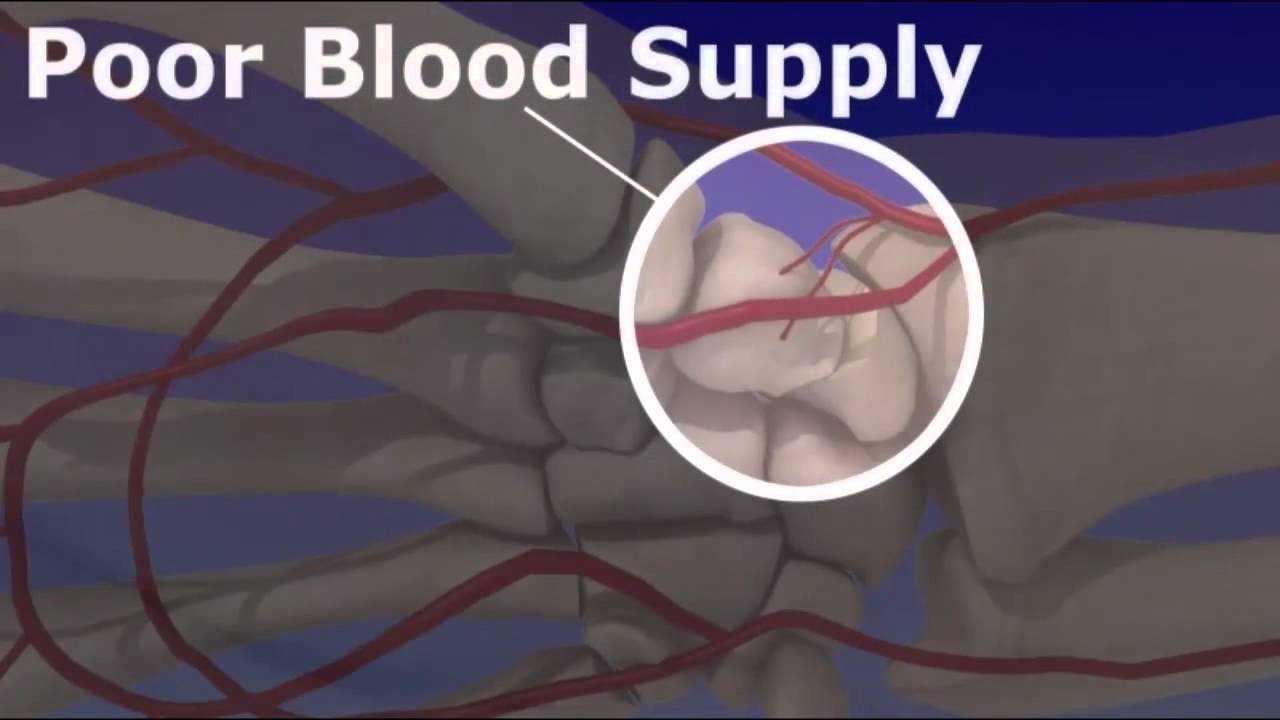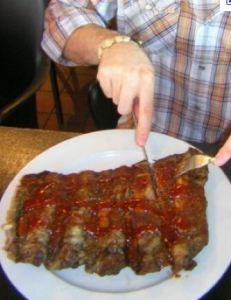In this episode of RoyOnRescue, I answer a question from someone who jumped feet first into a shallow pool and now their foot hurts when they walk on it. Is it broken or just sprained and how do I know what to do? Watch this episode to find out more.
Category Archives: Broken Bones
When Does An Injured Finger Need To Be Seen By The Doctor?
Hello Rescue Fans!
I received an email from someone who fell while rollerblading and injured their hand. They didn’t want to go to the doctor if they didn’t have to, but were concerned that they may have a fracture or a more serious injury and didn’t want to make a bad decision.Though I’m no “Orthopod“(slang word for the day meaning orthopedist) but there are a few tell-tale signs that I look for to determine if a trip to the doctor is warranted. Let’s face it, almost all injuries bruise and swell, but it’s in finding a couple of other things like crepitus or deformity that we realize this may be more serious. Keep in mind, even a bruise or swelling could be reason enough for trip to the doc. Though needless trips to the ER are never fun, losing the important function of fingers or toes is even worse. For those of you who can relate, I hope this helps!

I Broke My Wrist As A Kid, And Now It’s Starting To Hurt Again! Why?
I got another email from a Rescue Fan that asked about pain in the wrist that has recently become very bad. He had injured the scaphoid bone in his wrist as a teenager, got a cast, took it off prematurely and then just recently began to really feel pain, numbness and discomfort in the same area. I emailed him back and then thought there may be other’s with the same question due to the popularity of this type of injury. Here’s my email back to him. I hope it helps.
I’m sorry to hear that you’re going through so much discomfort. I looked up your injury and though nothing has told me anything you didn’t already know about this type of injury I’m including a video that may help refresh your memory.
In regards to the injury causing more problems. You are always welcome to request a second opinion and may even want to find a good “sports medicine” Ortho Doctor. It could be a number of things causing the pain but one reason is due to the possibility of developing “traumatic arthritis”, it could be Simple immobilization in a cast will not lead to healing of the bone. This scaphoid bone is particularly prone to this for several reasons: there is the possibility of the fracture being missed at the initial injury leading to a delay in treatment; secondly, the bone has a poor blood supply. The fact that it is inside the joint and is constantly being bathed by synovial fluid also contributes to the development of a nonunion. A nonunion, in other words, is a failure on the part of the patient’s bone to complete the healing process. A “false joint” occurs at the nonunion since the ends of the broken scaphoid are attached to ligaments at each end of the bone, further separating the fracture and preventing healing(http://www.arthroscopy.com/sp04013.htm). This can only be verified via thorough investigation by a qualified physician. In the mean time, rest, ice, elevation when possible and maybe even a splint of some sort can help to immobilize while on the way to the doctor to get to the bottom of the issue.
I hope this helps and I hope you’ll let me know what you find out.
Best Wishes,
Roy
Could My Ribs Be Broken After A Whole Year?
Hello Everyone,
This week I got a letter from a person who injured their back and ribs after they were thrown from their horse. They were seen by a Chiropractor but sounds as if they were never given an xray or diagnosed with broken ribs by xray, just a hunch. She asks, “can my ribs still be broken after a year and if not, what could be causing my pain to come back from time to time?”
Though I’m not a doctor and surely wouldn’t want to diagnose this, I will share some of my thoughts from a paramedics viewpoint.
The possibility that one or more of your ribs were broken is very likely, especially because it only takes a relatively small amount of pounds per square inch of pressure to fracture a rib.
You may have strained the intercostal muscles and even irritated some of the many nerves that run along the ribs. All of which could cause a great deal of discomfort and when that effected rib is pushed on, twisted or bumped again, it could even cause a re-injury of the same fracture point or muscle or cartilage.
Sometimes it turns out worse when we don’t get a good solid diagnosis from a doctor, because we can only guess what could be causing the pain and discomfort. Others may think we’re not really injured and insist on regular activities that could re-injure or aggravate the same injury.
If after a year, you are still feeling pain, pops, “crunchy” sounds on certain movements, I would strongly suggest that you get into your family doctor and let them know when this happened(how long ago), how it happened, how you were treated after it happened, any times where you may have twisted funny, landed wrong or re-bumped or re-injured the same painful area. I would imagine that they may want to take a series of xrays to get to the bottom of what’s causing the discomfort or pain.
I do think you’re justified in wanting to be seen. Pain is the way our bodies help us understand that something is not right and we should pay attention to it.
I hope this helps and I hope you get back to your normal functions without pain very soon!
Best Wishes,
Roy, RoyOnRescue.com
royonrescue@gmail.com
How Do I Know If It’s A Fracture or A Sprain?
Hello Again,
A great question came in about how to tell if an injury is a fracture or a sprain or strain. This is a great question. In some cases it’s very easy to tell that a fracture is present. Like… bone sticking out of the skin! But if it’s not and there isn’t any deformity, it can be tricky. Check out this video blog for a more in-depth look on how to tell if the injury is something that needs medical attention or if it’s minor and can be managed right at home.
To read a bit more about the specifics, feel free to browse this link.
Fractures Vs. Sprains and Strains
Best Wishes,
Roy, RoyOnRescue.com
royonrescue@gmail.com
Impact Sports and Rib Injuries!
In this royonrescue blog entry I wanted to address a particularly familiar problem associated with sports of all kinds but especially common with high impact sports and the new uptick of people getting into Martial Arts, Judo, Brazillian Jiu-Jitsu and MMA. For anyone who has been involved in any of these sports you know that it takes a lot of time, energy, work, determination and discipline to get to a point where you’re not just trying to get into shape but trying to improve your game. All the months and years of training hard, working out and testing your skills all to have them come to a screeching hault when your fell a rib “pop”. This term “popped a rib” is coined for the explanation of any type of injury having to do with the rib cage but is mostly found in the anterior or posterior region of the lower rib cage, ie. floating or hanging ribs. These are the ribs that are low and out to the sides of the abdominal region. They are called hanging or floating due to the fact that they are not connected to the sternum and only the spine. Because of this feature they are usually very flexible and can take a lot of pressure. When a person gets hit hard, leans over a railing wrongly or maybe takes a punch, kick or a knee on stomach from another sparring partner or teammate, they can damage the rib causing everything from dull to severe pain.
Now when I say from dull to severe I mean from the scale of pain everthing from .5-10 on the scale. Some of this depends on the severity of the rib fracture and some of it depends on if it is an actual rib fracture or if it’s a muscle or cartilage injury. The pain can be only sensitive to pressure or additional bumps or it can hurt when a person breaths but either way, when the injury is present it definitely makes itself known and can really screw up sleep, let alone your normal training routine.
Because I couldn’t find a lot of good advice or explanation all in one location, I thought I’d add my two cents to the whole thing and maybe help someone out.
Question: Is a rib fracture dangerous?
RoyOnRescue Reply: It is not usually a dangerous injury unless the rib is fractured completely and sharp bone end punctures an organ or muscle. If the rib is broken from a wrong movement it is probably not as potentially dangerous as when it’s broken from a severe force. Severe force strong enough to break a rib high up in the chest cavity may be strong enough to cause trauma to lungs, heart or other parts of the body. At it’s worse here’s what trauma.org says about rib fractures: Fractures of the lower ribs may be associated with diaphragmatic tears and spleen or liver injuries. Injuries to upper ribs are less commonly associated with injuries to adjacent great vessels. This is especially true of a first rib fracture, which requires a significant amount of force to break and indicates a major energy transfer. A fracture of the first rib should prompt a careful search for other injuries. Note also that the rib cage and sternum provide a significant amount of stability to the thoracic spine. Severe disruption of this ‘fourth column’ may convert what would otherwise be a stable thoracic spine fracture into an unstable one.(http://www.trauma.org/index.php/main/article/399/)Normally the biggest complication is that it impairs breathing deeply which can lead to respiratory infections or pneumonia and it’s hard to rest lying on your side or back depending on the location of the injury.
Question: Do I Have to Stop Training?
RoyOnRescue Reply: Do you want the true answer or the one I wanted to hear when I hurt my ribs the last time? Either way, I’m going to give it to you as straight forward as possible. Usually there isn’t much therapy for a broken/bruised or strained rib injury. If it hurts or makes it hurt worse with activity, stop the activity and give the injury time to heal. Usually 6-8 weeks has been the consensus from my research. If you can tolerate the workout without reinjury then you may be able to keep training. If it seems to make it worse and you are re-injuring the rib, you may need to stop and give it the time required. If in doubt, talk to your medical professional for advice. As for me, I train as long as I can tolerate it and try to not re-injure the same problem injury. If I do, I take time off.
Question: How Can I Treat The Inury to Help Healing?
RoyOnRescue Reply: Most research is going to tell you to rest as much as you can, drink lots of water and stay hydrated and try not to re-injure the same site. Cold packs applied to the area being careful not to place directly against the skin will help to decrease swelling and help aid the healing circulation. Some say that an ace wrap around the injured area of the chest may help support the area to decrease movement and pain. And of course most people will take some form of analgesic or non-steroidal anti-inflammatory medicine like Aspirin or Ibuprofen. Please refer to your doctor for prescriptions that would apply to you and be careful of allergies.
Question: How Do I Know If I Need To See A Doctor?
RoyOnRescue Reply: If you have any problem with Airway, Breathing or Circulation, Shock or Shock symptoms, internal pain that is increasing with or without moving, numbness or unable to move any part of your body, headache that is increasing or not going away, chest pain that is severe or for any reason you feel like you should see a doctor, it is always a good idea to be seen. Better to be safe than sorry and find out that you ignored an internal injury with severe bleeding or other complications. If the rib injury is causing any life threatening problems, call 911 immediately.
So to all my fellow rib injuries out there, I hope you feel better sooner than 6-8 days let alone weeks, don’t do what ever you did the first time to get hurt and get well soon.
I hope this helped and if you have any other questions or comments for RoyOnRescue.com be sure to email them to: royonrescue@gmail.com
Until next time, go fourth and rescue,
Best Wishes,
Roy
RoyOnRescue.com
royonrescue@gmail.com
“Head and Shoulders, Knees and Toes…”
A student emailed a question regarding the Head to Toe exam. Though this is normally performed as a secondary survey in a more advanced setting, I do think there are times where knowing how to check a person for other injuries is a good idea. Take a look at the video blog and I hope this helps.
Best Wishes,
Roy



